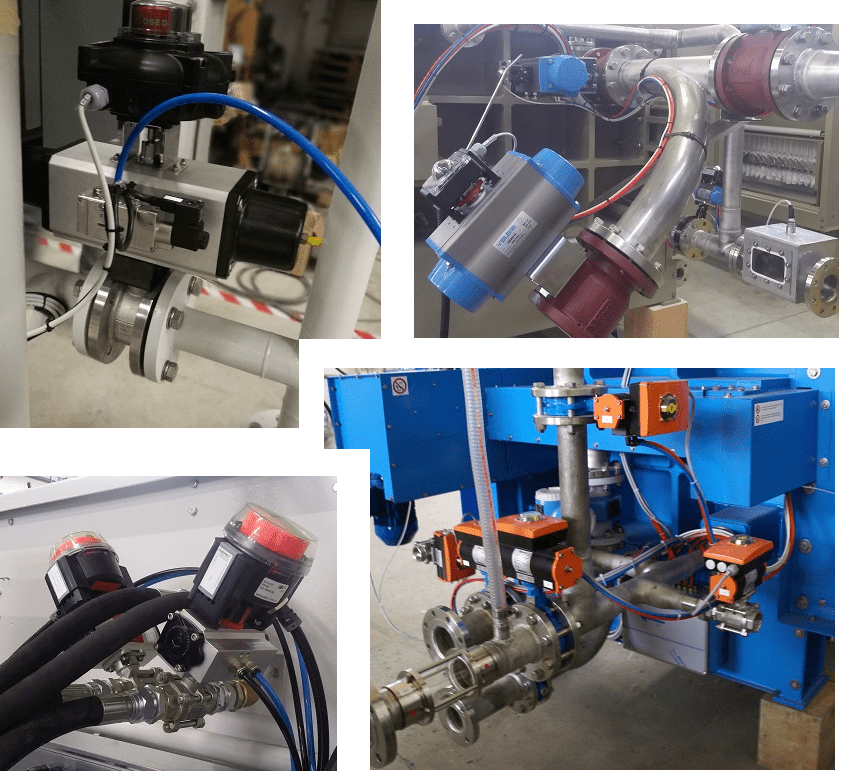La tipologia di valvole da installare nel piping del filtropressa può dipendere da molti fattori.
Per questo esistono diverse tipologie e diversi materiali, principalmente a seconda del fango o fluido da trattare ed a seconda del grado di automatismo della macchina.
Se il fango ad esempio non presenta particolari criticità sono normalmente installate le valvole a farfalla.
Qualora il fango dovesse essere particolarmente pesante con tendenza a tamponare, è consigliato l’utilizzo delle valvole a sfera in quanto consentono un passaggio totale.
Qualora invece il fango sia abrasivo, o presenti una alta percentuale di solidi in ingresso, potrebbe essere indicato utilizzare le valvole a manicotto.
The typology of valves to be installed in the filter press piping can depend on many factors.
For this reason there are different types and different materials, mainly according to the sludge or fluid to be treated and according to the degree of automatism of the machine.
If the sludge, for example, does not present particular criticalities, butterfly valves are normally installed.
If the sludge to process is particularly heavy with a tendency to obstruct, the use of ball valves is recommended as they allow total passage.
If, on the other hand, the sludge is fluid is abrasive, or has a high percentage of solids at the inlet, it may be advisable to use pinch valves.

E’ poi necessario fare un controllo di compatibilità chimica della valvola da montare con il fluido da trattare, prendendo in considerazione il ph e l’attacco chimico che può essere più o meno severo.
Normalmente queste valvole sono comandate da un attuatore pneumatico (che può essere a semplice o doppio effetto).
A seconda della pressione che si ha a disposizione in linea possiamo montare attuatori standard oppure attuatori maggiorati (che riescono a funzionare anche con pressioni più basse dei canonici 6-7 bar di linea).
Sopra questi attuatoti normalmente sono presenti opportuni Switchbox di segnalazione dello stato della valvola, in modo che sia possibile immediatamente valutare visivamente se la valvola è aperta oppure chiusa per una corretta diagnostica di funzionamento.
It is then necessary to check the chemical compatibility of the valve to be mounted with the fluid to be treated, taking into consideration the pH and the chemical attack which can be more or less severe.
Normally these valves are controlled by a pneumatic actuator (which can be single or double acting).
Depending on the pressure available in the line, we can mount standard actuators or oversized actuators (which are able to operate even with pressures lower than the usual 6-7 bar line).
Above these actuators there are installed Switchboxes for signaling the status of the valve, so that it is possible to visually control whether the valve is open or closed for correct functioning diagnostics.